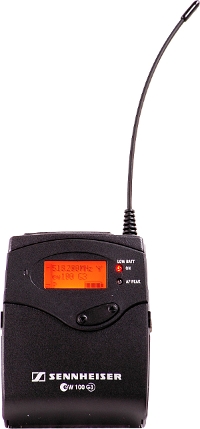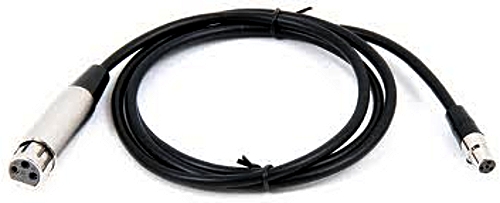Anyone who has done live sound knows this ultimate truth: Cables suck! Thankfully in this modern era we have wireless options to cut down on the rats’ nest of cable!
Why Wireless?
With live sound you always need to be careful with your signal chain. While you might miss a magic moment in the studio from a gear mishap, a mishap during a show means a screeching halt. Adding any wireless device to a show is taking a risk that you might pick up some nasty unwanted signals. This could be especially problematic if the wireless signal is your main feed! So why oh why would we even risk it?
Because a wireless rig can potentially be quicker to setup, get to hard-to-reach areas, and broadcast to more than one set of speakers. If you have ever had to set up an entire show by yourself, then you know how much time can work against you!

A wireless setup also saves you from having to run cables over doorways. Gaff tape is awesome, but not needing any is even more awesome! It also allows for a more flexible location for front of house. While you might still be tied down with microphone snakes, moving one big cable is easier than a bunch of extra little ones!
Also keep in mind that people use wireless microphones all the time. Once they are set to the right frequencies, bandwidth conflict should be a non-issue. Only when you are dealing with crowds in the thousands should you need to keep checking for bandwidth conflicts. Besides if you are working a show with thousands of audience members, you probably are not doing the show by yourself and have help running cables!
Other Problems?
As with anything, there are other potential issues that may not seem obvious at first. While with wireless audio these problems are few, they should still be noted. Here are the biggest contenders:
- Audio Bandwidth – Not all transmitters are made the same. Most analog (FM) transmission systems are not able to send full bandwidth audio signals. Usually they are capped at 15kHz which may or may not be acceptable depending on your situation. Digital transmitters, however, are capable of full 20kHz signals.
- Compression – For transmitters to work, there usually is the need for companding to take place. The signal is compressed at the transmitter and expanded back out at the receiver. Some people find this objectionable where as others pay no mind. The choice is yours!
- Delay – One of the biggest drawbacks of digital systems is that they introduce delay. While 3ms may not seem like much, some touchy singers may disagree.
Going Wireless
For those of you still undaunted and itching to use those spare wireless kits, let’s get started!
- Start by setting two wireless receivers near monitors; one for left and one for right.
- After these receiver are powered up, make sure they are outputting line level and not mic level. Then connect the receiver’s output to the input of your monitor (assuming self-powered).
- Next, take the wireless transmitter packs (typically designed for lav mics) and connect them to the output of your mixing console, final EQ, or whatever is the end of your processing chain in a L-R configuration. You will probably need special cables to do this! For example, the Shure transmitters need a female XLR to TA4F cable.
- After you have connected your wireless packs to your board, make sure set them to different and non-conflicting channels.
- Finally, make sure you have your receivers matching on the same channels.

At its core, the setup is really that simple! If you have multiple speakers on each left and right, just daisy chain them together with short XLRs as you normally would.
Have extra speakers that are further away and would require very long cable runs? Simply add a receiver for those speakers and match the receiver to either the same channel as the left or right transmitter. Simple!
Remember you only need as many transmitters as signals you need to send, but you can keep adding receivers for more speakers (except for some digital systems that relay on paring the two).
Watch Out For…
Hopefully the above setup works for you every time, but chances are you may run into a issue here or there. Here are a few key points to keep in mind with this setup:
- Transmitter Input Gain – Normally these transmitters are designed for microphone inputs and can easily clip. Thankfully the mid-grade and up variations usually have a gain adjustment and a pad built in. If you do not turn the input gain down and have a pad, you will most likely clip and drive yourself crazy!
- Battery Life – Most wireless transmitters are battery powered, and with batteries come limitations on how long they work. You should be able to get a solid four hours or so out of most transmitters, but make sure you check! Always put fresh batteries in right before the show starts!
- Transmitter Range – Everything has its limitations, and wireless audio systems are no different. Unless you are using a state of the art wireless rig like Shure’s Axient, there will be practical range limitations, especially if there is interference. Generally speaking, anywhere between 100 feet and 300 feet is a safe bet. This obviously goes down with more interference.
Conclusion
Wireless audio really is a treat to work with in a live setting. It is highly flexible and can make larger setups go much quicker. You still need to be careful with your surroundings and always be checking your wireless signal. So if you have some wireless kits laying around, go try them out! You might be surprised how good it sounds! Thanks for reading!
{excerpt}
Read More